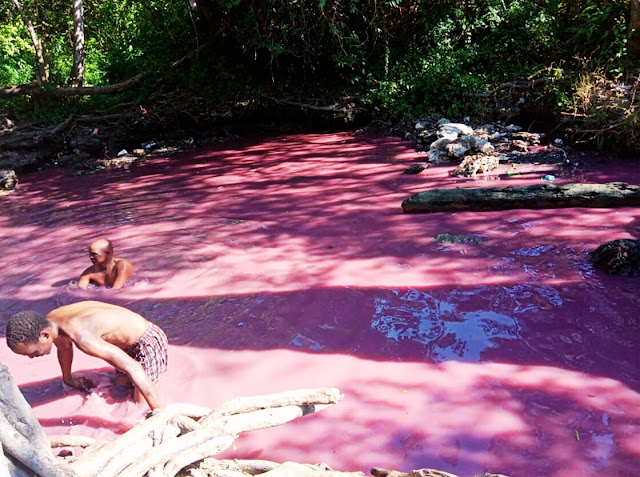Isinuka is a sacred healing site in Emampondweni, near Port St. Johns in South Africa's Eastern Cape province. Isinuka means "place of smell" in Xhosa, and the area is known for its sulfuric springs, which are thought to have healing properties.
The Isinuka springs are said to be effective in treating a wide range of ailments, including skin conditions, respiratory issues, and even HIV/AIDS. Many people believe that the water in the springs is very salty and has a strong sulfuric odor, but that these are actually signs of its healing power.
Aside from the springs, Isinuka is home to a number of other natural features thought to have healing properties. Caves with white mud are said to be effective in treating skin problems, as is a sacred stone hole in the ground (Kaaba) that serves as a spring for the Isinuka drinking water.
Isinuka is a popular destination for people seeking healing from all over South Africa and the world. Hiking, camping, and bird watching are also popular in the area.
Read Also Kruger National Park: A Big 5 Capital
History of Isinuka
For centuries, the Isinuka springs have been used for healing. The Mpondo people, the land's traditional owners, have a long history of using the springs to treat a variety of ailments.
The South African government attempted to commercialize Isinuka Springs in the early 2000s. They erected a fence around the area and installed a tap near the water's source. However, the springs quickly dried up, forcing the government to abandon its plans.
Isinuka has since been returned to the Mpondo people, who continue to use the springs for healing. The area is also a popular tourist destination, with visitors coming from all over the world to experience Isinuka's healing powers.
How to Visit Isinuka
Isinuka is in Emampondweni, about ten kilometers from Port St. Johns. The most convenient way to get to Isinuka is by car. The springs are accessible via a dirt road, and there is a small parking area near the entrance.
The springs are open to the public and free of charge. However, it is critical to be respectful of the environment and to follow the rules established by the Mpondo people.
What Should You Bring to Isinuka?
There are a few items you should bring with you if you plan to visit Isinuka. These are some examples:
- A hat and sunscreen are recommended.
- A bathing suit
- a cloth
- A water bottle
- A video camera
- You should also bring snacks or drinks because there are no shops or restaurants near the springs.
What Can You Expect at Isinuka?
A strong sulfuric odor will greet you upon arrival at Isinuka. This is normal, and it is a sign that the spring water is pure and has healing properties.
The springs are in a beautiful natural setting, and there are several things to do while you're there. You can swim in the springs, soak in the mud, or simply relax and take in the scenery.
Isinuka is the place to go if you want to have a truly unique and spiritual experience. The area is rich in history and tradition, and the springs' healing powers are said to be miraculous.
FAQ
1. What is pink Isinuka water good for?
Isinuka's pink water is thought to have a variety of healing properties, including the treatment of skin problems, respiratory problems, and even HIV/AIDS. Although the water is very salty and has a strong sulfuric odor, many people believe that these are signs of its healing power.
2. Which sacred is located in Port St Johns in Eastern Cape?
Isinuka is a sacred healing place in Port St Johns, Eastern Cape.
3. Can I drink pink water?
Drinking the pink water in Isinuka is not recommended. The water is extremely salty and has a strong sulfuric odor that can be harmful if consumed.
4. What is the benefit of drinking pink salt water?
There is no scientific evidence to back up the claim that drinking pink salt water is beneficial to one's health. Some people, however, believe that drinking water can help to detoxify the body and improve circulation.
5. What was Port St Johns original name?
Port Natal was the original name for Port St Johns. In 1835, the name was changed to Port St Johns after Saint John the Baptist.
Here are some more details about Isinuka's pink water:
- Because of the high levels of minerals present, such as iron, magnesium, and sulfur, the water is a deep pink color.
- The water is extremely salty, with a salinity level approximately ten times that of seawater.
- The water has a strong sulfuric odor that some people find unpleasant.
- The water is thought to have a variety of healing properties, including the treatment of skin problems, respiratory issues, and even HIV/AIDS.
- The water is not safe to drink and should only be used externally.

